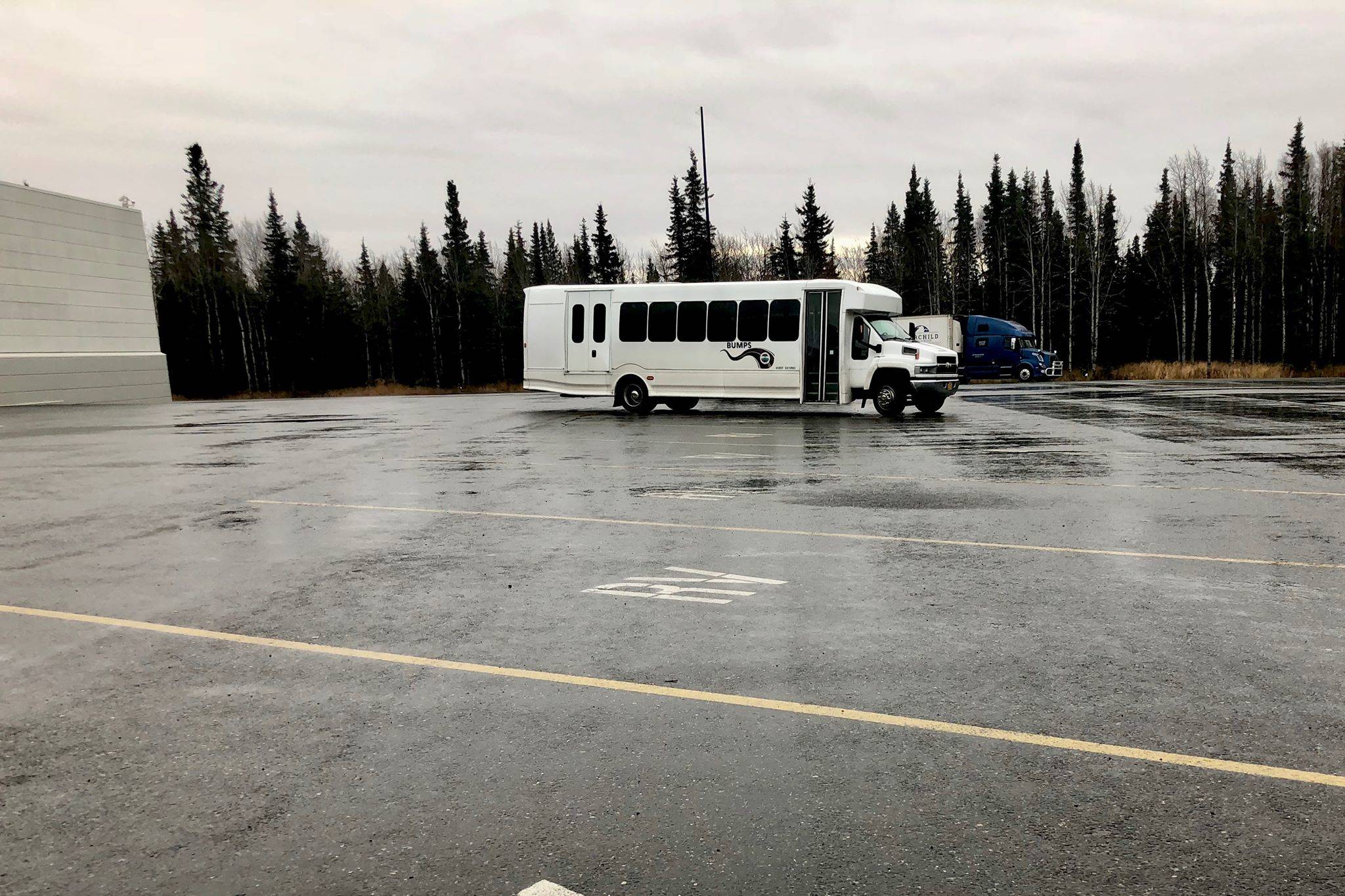The Kenai Peninsula is nearly the size of West Virginia with small towns and unincorporated communities sprinkled throughout. Without a car or other means of transportation, it can be difficult for people to maintain employment, make it to appointments and get to school.
That’s why several local entities are working to make it easier for people to get around.
One of the newest programs is called BUMPS, or Basic Unified Multi-Path Service. The two-bus public transportation system is run by the Ninilchik Traditional Council.
During a community transportation meeting hosted by Change 4 the Kenai, a coaltion working toward uniting the community, on Oct. 9, Ninilchik Village Tribe board director Jamie Leman said that BUMPS ridership is increasing.
“We have over 16,000 passenger miles accumulated to date, which really isn’t that much,” Leman said. “There are quite a few riders from Homer who are stepping onboard. It’s a diverse group of people.”
Leman said the schedule will remain the same until the tribe can get more funding. Tribal funds and Federal Transit Administration grants have made the program, and its potential growth, possible. The tribe applied for an FTA grant of $551,000 to build garages, where they can house the buses in the winter months.
BUMPS began operations in early 2018, the Clarion previously reported. There are two buses that run Mondays, Wednesdays and Fridays through Ninilchik, Happy Valley, Anchor Point, Homer, Clam Gulch, Kasilof, Soldotna and Kenai. A one-way ticket is $7, and round trip is $10. The route is fixed, with stops in central locations in each community, such as the Cheeky Moose in Anchor Point, the Soldotna Fred Meyer and the Kasilof post office.
The system is open to the public and is ADA accessible.
There are a few other programs available on the peninsula for those who do not have a vehicle.
Central Area Rural Transit System, or CARTS, has been providing public transportation on the peninsula since the early 2000s. They do not operate south of Kasilof, and suspended voucher services in Homer and weekend services on the central peninsula in 2017, the Clarion previously reported.
For many on the peninsula, their job is not within walking distance of their home. The average Kenai Peninsula Borough resident who is 16 years old or older has an 18-minute commute, according to the U.S. Census American Community Survey estimates for 2012 to 2016.
The peninsula’s Independent Living Center is also working to help residents have easier access to public transit through a grant-funded voucher program.
The Alaska Community Transit for Human Services grant from the Alaska Department of Transportation works to help the elderly and those with mobility issues. In the past, the voucher program has partnered with AAA Alaska Cab, which has a 23-vehicle fleet, including six accessible minivans.
The program has existed for 21 years on the central peninsula and has served 544 riders in the last four years, according to the grant application. In Homer, the program has been around for 18 years and has served 270 riders in the last four years.
Two separate grant applications must be submitted for the central peninsula and the Homer area.
The central peninsula and Homer grant are asking for the same amount of money as last year, which was $90,000 for the central peninsula and $50,000 for Homer. Last year, the central peninsula received only $45,000 and Homer received the total $50,000 requested. Both grants require a smaller match in rider fees.
Joyanna Geisler, the executive director of the Independent Living Center, said at the Oct. 9 meeting that the grant application is a competitive process statewide.
“Historically, both projects have been funded even though Homer competes against central peninsula,” Geisler said.
The grants must be supported by the area’s governmental agency, which is the Kenai Peninsula Borough Assembly.
Geisler said she’d like to local governments get more involved in area public transit.
“What many of us have been talking about is having municipality and local governments having some skin in the game,” Geisler said. “They can have some roles and responsibilities for planning or contribution of resources, whether that’s staffing resources or actual money spent. … In my opinion, the borough and local governments have some responsibility for planning for that and assisting in getting services delivered.”
The Independent Living Center grant applications will be sent to the Borough Assembly to be considered for support later this month.


